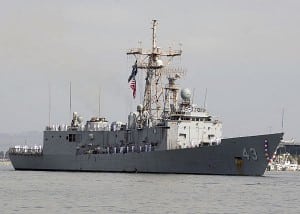
Several Navy experts testified at a seapower panel Tuesday on the factors in reaching a 355-ship Navy, including the tradeoffs in reactivating the Oliver Hazard Perry-class frigates (FFG-7) and extending the lives of current ships.Ronald O’Rourke, specialist in naval affairs at the Congressional Research Service (CRS) noted the technical feasibility and potential cost effectiveness of reactivating the Perry frigates is not yet clear. “It may be possible to do something creative with the FFG- 7 class ships. Exploring options for…

 By
By 











